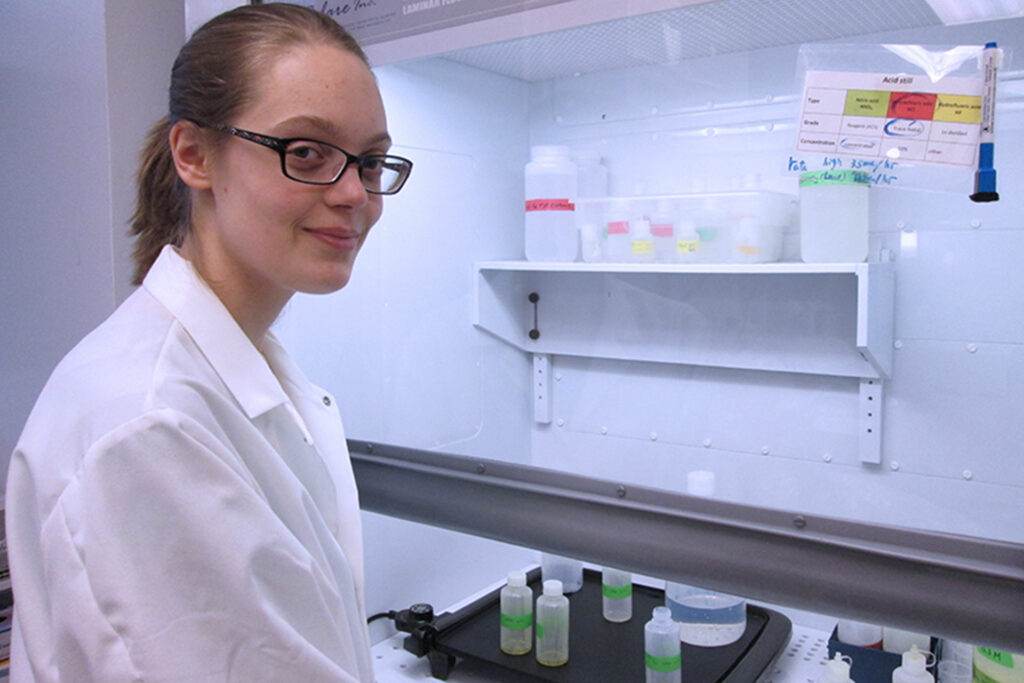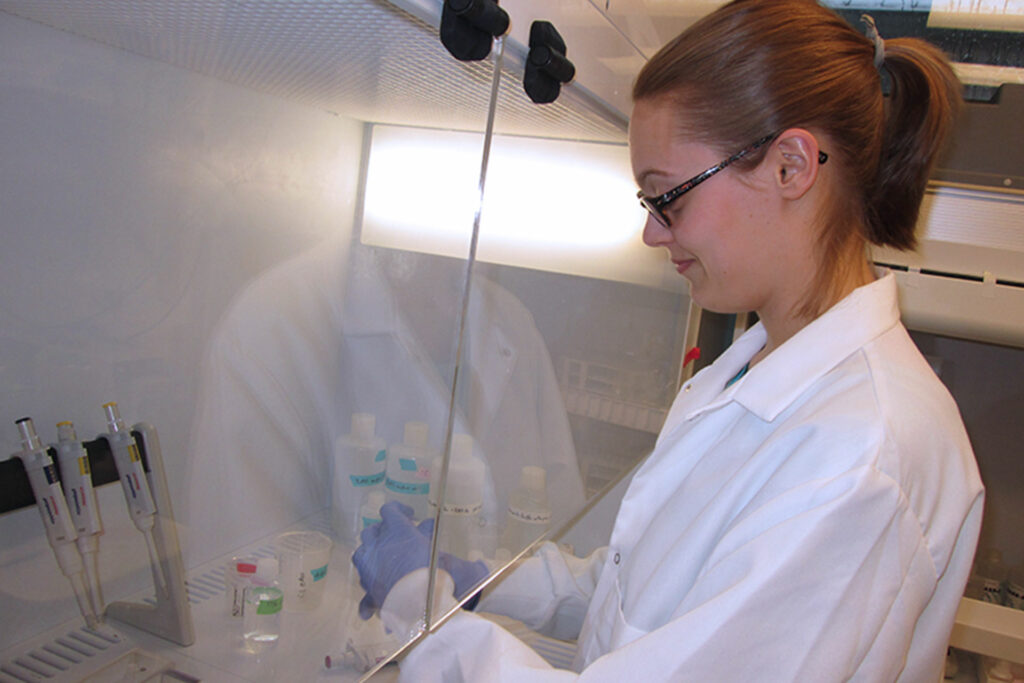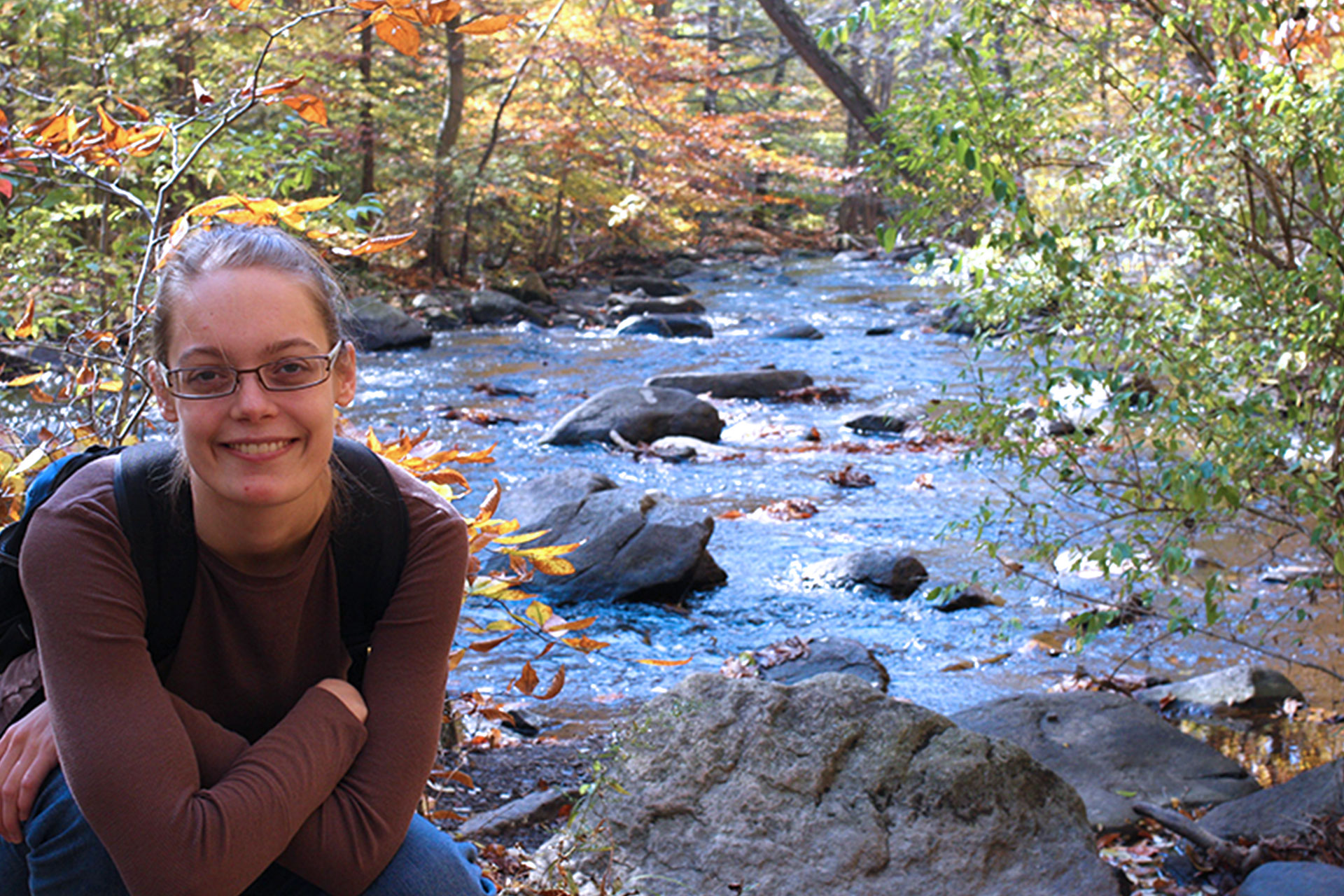Flipping through the pages of a sixth century illustrated Bible in a cathedral library provided me a unique glimpse into another era; contrast this with a few days later, when I traversed a landscape searching for clues from the rocks to provide a geological narrative. Although very different contexts, my interest lies in observing and understanding the past in order to obtain a basic awareness of how human activities may impact our environment.

I come from Caribou, Maine – a town from the northern-most part known for snowy winters, an abundance of potatoes, and tracts of forests. Contrasting the agricultural setting, my family would spend some time each summer in the Bay of Fundy in Canada by visiting Grand Manan Island. The coastal dynamics fascinated me−from hearing the waves coming ashore to seeing the varying rock formations, from tasting the sea salt mist in the air to watching the fisherman in the community prepare their boats at the wharves. Within this region, the world’s largest tides occur- it was fun to watch how dramatic the tideline changed throughout the day.

Not leaving Maine, I did my undergrad at Bowdoin College – a small, liberal arts college in a coastal town. When I had entered, I wasn’t sure about what I wanted to major in. Throughout my first year, I helped out a sedimentary geologist with his research project. Thus, without even taking a course, I knew I was going to become an earth and oceanographic science major. However, this was not the only field I was interested in- I completed a major in art history, too. On many occasions when I told people of my majors, many didn’t see how they overlapped, but for me, these two fields complemented each other to reconstruct a history of people and earth by using visual and chemical methods. Throughout college, I worked on a research project to measure real-time nitrate concentrations in varying water conditions using a UV-vis spectrophotometer. As a result, we were able to develop a method that provides estimates of salinity and terrestrially derived organic matter in seawater, in addition to nitrate concentrations.
Coming to Rutgers, I joined Silke Severmann’s lab where we use concentrations and isotope ratios of trace metals to reconstruct ocean conditions in the past and understand current biogeochemical processes. I am interested in exploring the triggers and the subsequent responses of past events, signs of which are preserved within the ocean sediments. Knowledge of the past environmental conditions can provide perspective of how Earth responds to major perturbations. Outside of lab, I have enjoyed being a teaching assistant, especially helping students to expand their understanding and to guide them to answer their own questions.

